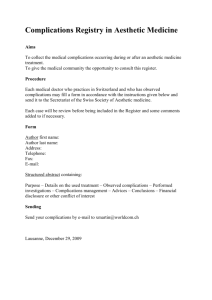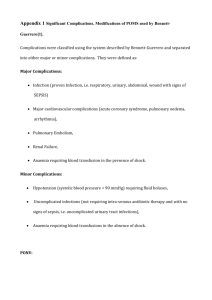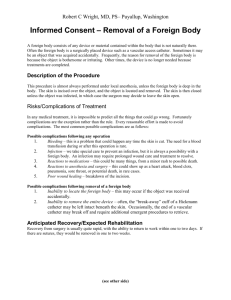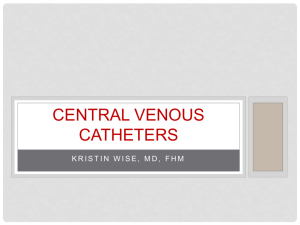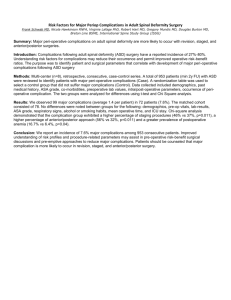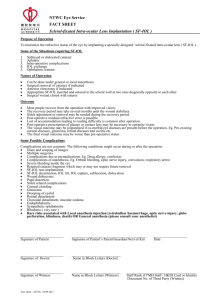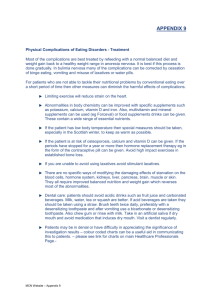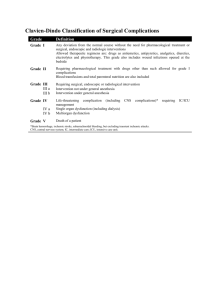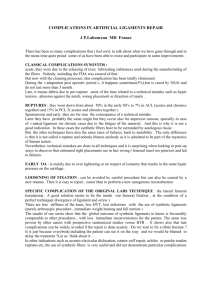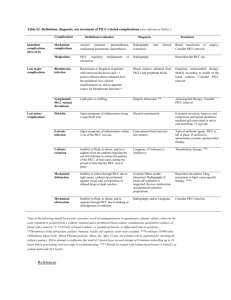118.1 Mazzola
advertisement
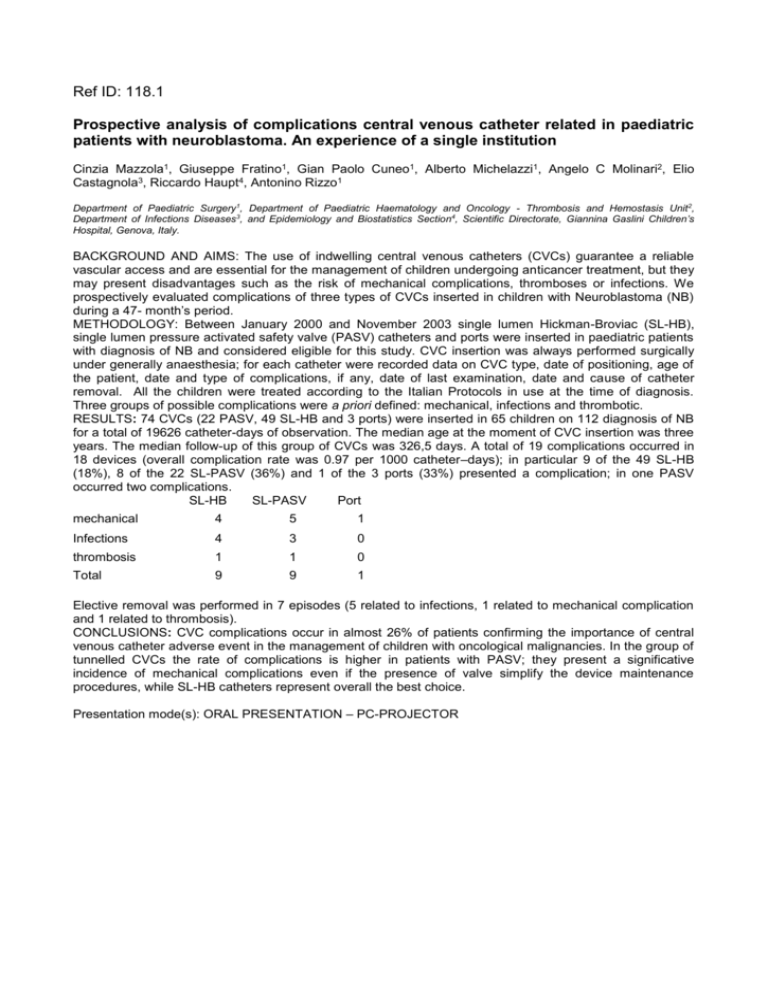
Ref ID: 118.1 Prospective analysis of complications central venous catheter related in paediatric patients with neuroblastoma. An experience of a single institution Cinzia Mazzola1, Giuseppe Fratino1, Gian Paolo Cuneo1, Alberto Michelazzi1, Angelo C Molinari2, Elio Castagnola3, Riccardo Haupt4, Antonino Rizzo1 Department of Paediatric Surgery1, Department of Paediatric Haematology and Oncology - Thrombosis and Hemostasis Unit2, Department of Infections Diseases3, and Epidemiology and Biostatistics Section4, Scientific Directorate, Giannina Gaslini Children’s Hospital, Genova, Italy. BACKGROUND AND AIMS: The use of indwelling central venous catheters (CVCs) guarantee a reliable vascular access and are essential for the management of children undergoing anticancer treatment, but they may present disadvantages such as the risk of mechanical complications, thromboses or infections. We prospectively evaluated complications of three types of CVCs inserted in children with Neuroblastoma (NB) during a 47- month’s period. METHODOLOGY: Between January 2000 and November 2003 single lumen Hickman-Broviac (SL-HB), single lumen pressure activated safety valve (PASV) catheters and ports were inserted in paediatric patients with diagnosis of NB and considered eligible for this study. CVC insertion was always performed surgically under generally anaesthesia; for each catheter were recorded data on CVC type, date of positioning, age of the patient, date and type of complications, if any, date of last examination, date and cause of catheter removal. All the children were treated according to the Italian Protocols in use at the time of diagnosis. Three groups of possible complications were a priori defined: mechanical, infections and thrombotic. RESULTS: 74 CVCs (22 PASV, 49 SL-HB and 3 ports) were inserted in 65 children on 112 diagnosis of NB for a total of 19626 catheter-days of observation. The median age at the moment of CVC insertion was three years. The median follow-up of this group of CVCs was 326,5 days. A total of 19 complications occurred in 18 devices (overall complication rate was 0.97 per 1000 catheter–days); in particular 9 of the 49 SL-HB (18%), 8 of the 22 SL-PASV (36%) and 1 of the 3 ports (33%) presented a complication; in one PASV occurred two complications. SL-HB SL-PASV Port mechanical 4 5 1 Infections 4 3 0 thrombosis 1 1 0 Total 9 9 1 Elective removal was performed in 7 episodes (5 related to infections, 1 related to mechanical complication and 1 related to thrombosis). CONCLUSIONS: CVC complications occur in almost 26% of patients confirming the importance of central venous catheter adverse event in the management of children with oncological malignancies. In the group of tunnelled CVCs the rate of complications is higher in patients with PASV; they present a significative incidence of mechanical complications even if the presence of valve simplify the device maintenance procedures, while SL-HB catheters represent overall the best choice. Presentation mode(s): ORAL PRESENTATION – PC-PROJECTOR
